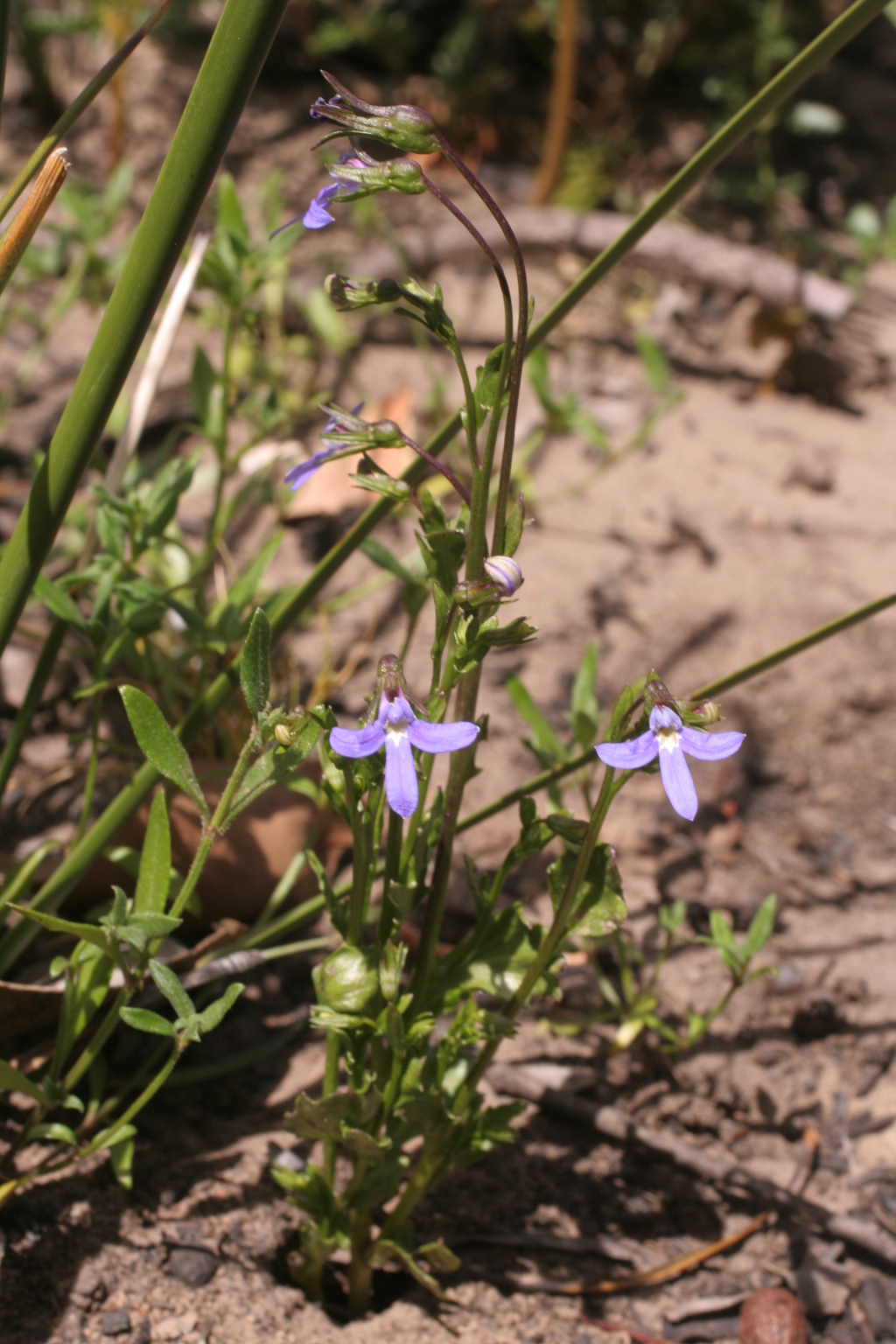Lobelia rhombifolia
de Vriese Tufted LobeliaAscending to erect, glabrous or rarely papillose annual to c. 35 cm high; stems usually several arising from base. Leaves spathulate, obovate to oblong, 8–25 mm long, 2–12 mm wide, pinnately lobed or coarsely toothed (but reducing and c. entire up stem); petiole absent or indistinct. Flowers bisexual, in terminal and sometimes axillary 1–4-flowered cymes; pedicels elongating after flowering to c. 120 mm long, glabrous. Calyx-lobes 2.5–6 mm long, entire; corolla 2-lipped, 10–15(–17) mm long, dark blue, rarely white, upper 2 lobes short, strongly recurved, lower 3 lobes spreading, oblong-elliptic to oblanceolate (rarely obovate), central lobe longest, 5–10 mm long, 1.6–4 mm wide, lateral lobes falcate, tube 4.5–8 mm long, split virtually to base, glabrous to minutely pubescent internally towards base; filaments 3–5 mm long, anther tube c. 1.7–2.2 mm long. Capsule broadly and obliquely obovoid, c. 5–8 mm long; seeds ellipsoid, slightly angular, 0.25–0.35 mm long, light brown, lustrous, smooth or very faintly ridged. Flowers Oct.–Feb.
GleP, VVP, GipP, OtP, GGr, EGL, WPro, HSF, HNF, OtR. Also WA, SA, Tas. A disturbance ephemeral, often appearing abundantly after fires or following bulldozing of tracks but scarce or absent several years thereafter. Occurs on rocky or sandy sites usually in open-forest.
Albrecht, D.E.; Walsh, N.G. (1999). Campanulaceae. In: Walsh, N.G.; Entwisle, T.J., Flora of Victoria Vol. 4, Cornaceae to Asteraceae, pp. 553–553. Inkata Press, Melbourne.
 Spinning
Spinning

